Good News in History September 14
39 years ago today, the Penang Bridge officially opened connecting the Malay Peninsula with the island of Penang. Stretching 5.2 miles across the Penang Strait, it’s the second-longest bridge over water in Malaysia. Architects decided to use a cable-stayed suspension design similar to the Golden Gate Bridge rather than the steel-tied arch style of the Sydney Harbour Bridge. READ a short synopsis of the building challenges… (1985)

Engineers working on the first Penang bridge faced major challenges with ground conditions during construction work. The presence of a layer of mollusk shells, often found in coastal areas, meant the ground at the site was like soft clay. This led to excessive depression of the bridge piles during construction.
For each pile, the construction team had to cart in tremendous amounts of material that had been dug up to connect the bridge embankments and road works on land to lay over the shells and compact it.
When the second Penang Bridge, further to the south, was constructed it burrowed from knowledge and design used on this first one but included expansion joints—allowing the structure to move during an earthquake
MORE Good News on this Day:
- The Boston Light became the first lighthouse lit in the United States: in Boston Harbor, Massachusetts, in what was the American colonies, it is and still staffed by the Coast Guard in a keeper/tour guide role (1716)
- The first televised episode of the comic strip The Archies aired, featuring a 5-piece band that rose to fame with the real-life pop hit Sugar Sugar—produced by Don Kirshner, who also brought us The Monkees (1968)
- The Waltons TV program premiered on American television (based on a book by Earl Hamner, Jr.) about a family in rural Virginia coping with the Great Depression (1972)
- The first American saint, Elizabeth Ann Seton, was canonized by Pope Paul VI (1975)
- The film Quadrophenia was released, based on The Who’s 1973 rock opera album of the same name (1979)
- Historic National Prayer Service held in Canada on Parliament Hill for victims of the September 11 attacks, the largest vigil ever held in the nation’s capital (2001)
- The first observation of gravitational waves was made, by the LIGO and Virgo collaborations, a discovery that won the Noble Prize in Physics (2015)
205 years ago today Clara Schumann was born. Regarded as one of the most distinguished pianists of the Romantic era, Schumann, according to Wikipedia, shifted the emphasis of what made a great pianist away from virtuoso pieces and toward the aesthetics of the recital. She achieved this over a 61-year career performing live, but she also composed solo piano pieces, a piano concerto (her Op. 7), chamber music, choral pieces, and songs.
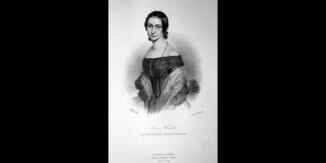
Born into a family of pianists in Germany’s musical crucible of Leipzig, Clara was designated a child prodigy. She began touring at age eleven, and was successful in Paris and Vienna, among other cities. Musical Germans were constantly part of her life. She married the composer Robert Schumann, and the couple had eight children. Together, they collaborated with Johannes Brahms and maintained a close relationship with him. She gave the public premieres of many works by her husband and by Brahms.
Robert died young, from a psychotic episode that saw him attempt suicide and then admitted into a sanitarium. Brahms as well as other master musicians spent time with Clara attempting to nurse her through the loss of her beloved husband with music.
Over 1,300 concert programs from her performances throughout Europe between 1831 and 1889 have been preserved. Most of Clara Schumann’s music was never played by anyone else and largely forgotten until a resurgence of interest in the 1970s. Today her compositions are increasingly performed and recorded.
Her output slowed considerably after having children, something her husband lamented, but something she felt was right and responsible. (1819)
15 years ago, Sir David Attenborough officially opened the Darwin Center of the Natural History Museum in London, the largest additional wing of the museum to be added since the complex was opened. With the aim of connecting visitors to the nuts and bolts of the natural sciences of biology and taxonomy as never before, a large feature of the museum are real laboratories where scientists conduct research on species—themselves on display behind huge glass walls. Some of these spaces are linked to intercoms so guests can ask the scientists what they are working on.
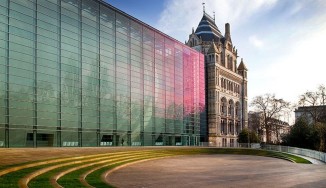
“Never has it been so important to understand the diversity of life on Earth and how it is changing, if we are to tackle many of the issues that humans face today,” Sir David said at its opening.
“The Darwin Centre will inspire the next generation of naturalists and scientists through its combination of scientific expertise, specimens, public dialogue, film and interactive media. It will enable all of us to explore the wonders of our world and investigate its secrets.”
The new center which is the world’s largest sprayed concrete structure, doubled the museum’s laboratory space, and on display in its various rooms like the giant Cocoon are 17 million species of insects and 3 million species of plants. (2012)
85 years ago today, Igor Sikorsky flew his self-designed Vought-Sikorsky VS-300, the first viable helicopter, which pioneered the rotor configuration used by most helicopters today.
In 1901, the Russian homeschooled boy began to experiment with model flying machines, and by age 12, he’d made a small rubber band-powered helicopter.
During the revolution, he emigrated to the U.S., launched an aircraft company, and was convinced that his years of study and research into rotary-wing flight problems would lead to a breakthrough.
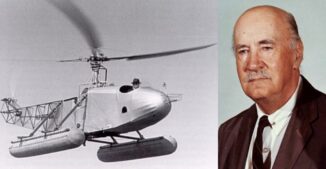
The VS-300, with its single three-blade rotor originally powered by a 75 horsepower engine, was the first successful helicopter to use a single vertical-plane tail rotor configuration for anti-torque. With floats attached, it became the first practical amphibious helicopter. Soon, Igor Sikorsky modified the design into the R-4, which 3 years later became the world’s first mass-produced helicopter. (1939)
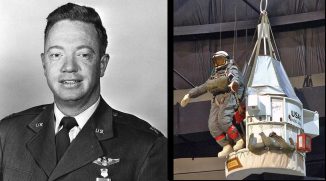
40 years ago today, retired Air Force Colonel and fighter pilot (who was shot down a decade earlier) Joseph Kittinger set off alone as the first man to cross the Atlantic in a gas-powered balloon, setting a world aerospace record.
Four days later, after having traveled 3,543 miles (5703km) through the middle layers of the stratosphere, he had become the first man to fully witness the curvature of the earth—on a mission that was seen by its designers as a stepping stone to space. He also previously set a world record for the highest skydive from a height greater than 19 miles. (1984)
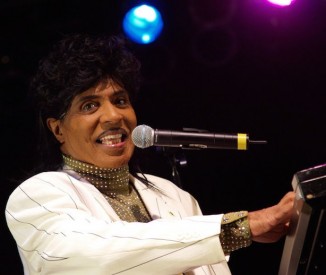
And, on this date in 1955, after frustrating sessions in a recording studio, Little Richard and his producer went to a bar for lunch. Richard started playing the piano like crazy, singing a loud, racy version of ‘Tutti Frutti,’ a song he had written and composed for live club gigs years earlier.
With its opening cry of ‘A-wop-bop-a-loo-bop-a-lop-bam-boom,’ the producer knew it would be a hit. Richard completed the song in three takes and it became his first #1 hit. Some call this song “the record that changed the world” and “the birth of rock and roll”, with its loud vocal style emphasizing power, and its distinctive beat and rhythm, combining elements of boogie, gospel, and blues. David Bowie credits Little Richard as his most important musical inspiration.
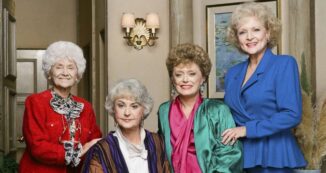
39 years ago today, The Golden Girls, starring Bea Arthur, Betty White, Rue McClanahan, and Estelle Getty, debuted on television. The popular sitcom created by Susan Harris aired on NBC for seven seasons—a total of 180 half-hour episodes. The show features four older women who share friendship and a home in Miami, and the wise-cracking women were an instant hit with audiences.
The Golden Girls received critical acclaim, too, winning the Primetime Emmy Award for Outstanding Comedy Series twice. It also won three Golden Globe Awards for Best Comedy TV show. Each of the four stars received an Emmy Award, making it one of only three sitcoms in history ever to achieve this. The series also ranked among the Nielsen ratings Top 10 for six of its seven seasons.
In 2014, the Writers Guild of America placed the sitcom at number 69 in their list of the “101 Best Written TV Series of All Time”. WATCH a great highlight reel of some of their funniest moments… (1985)
SHARE the Milestones, Memories, and Music…
>read more at © GoodNews
Views: 7